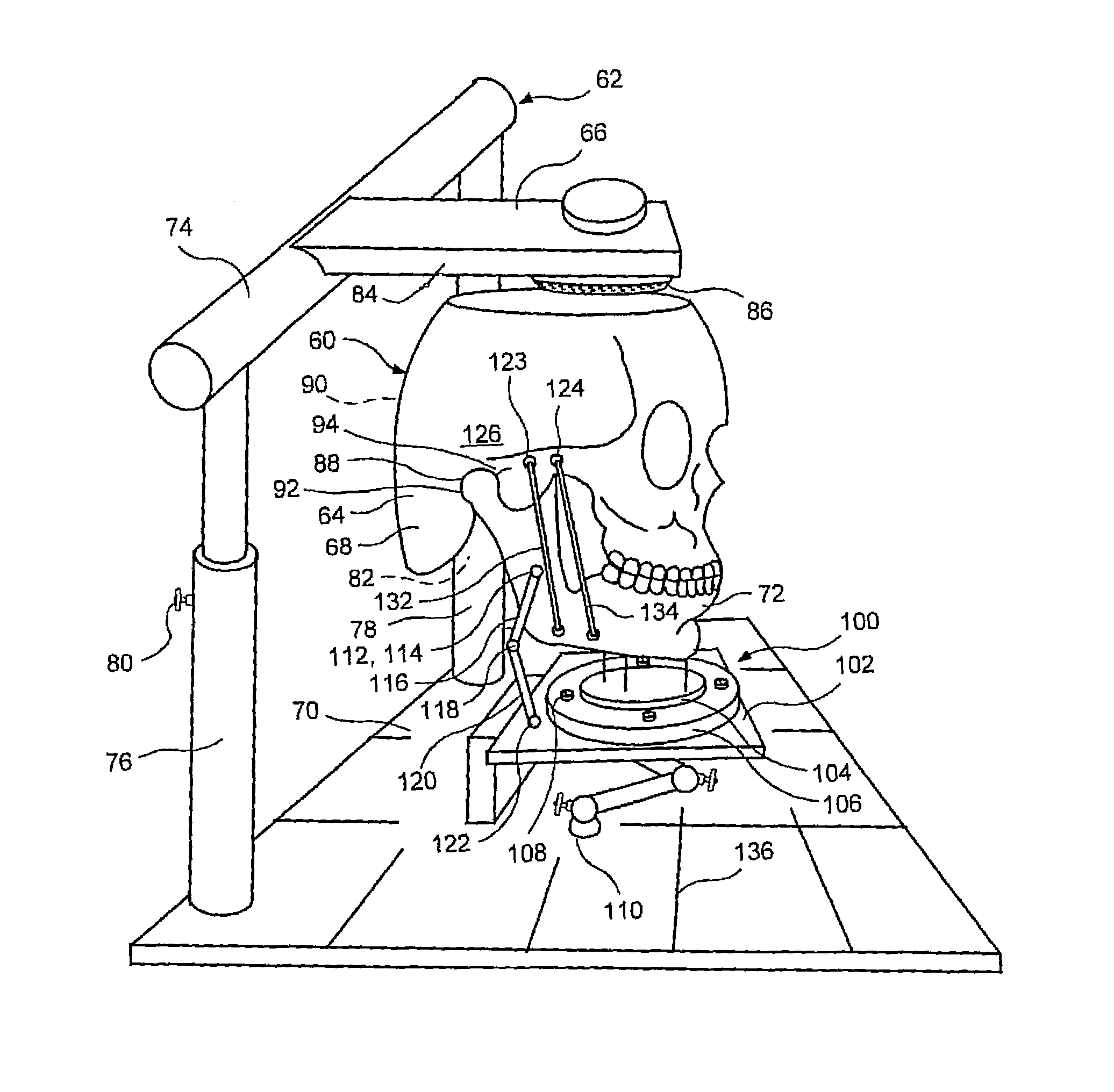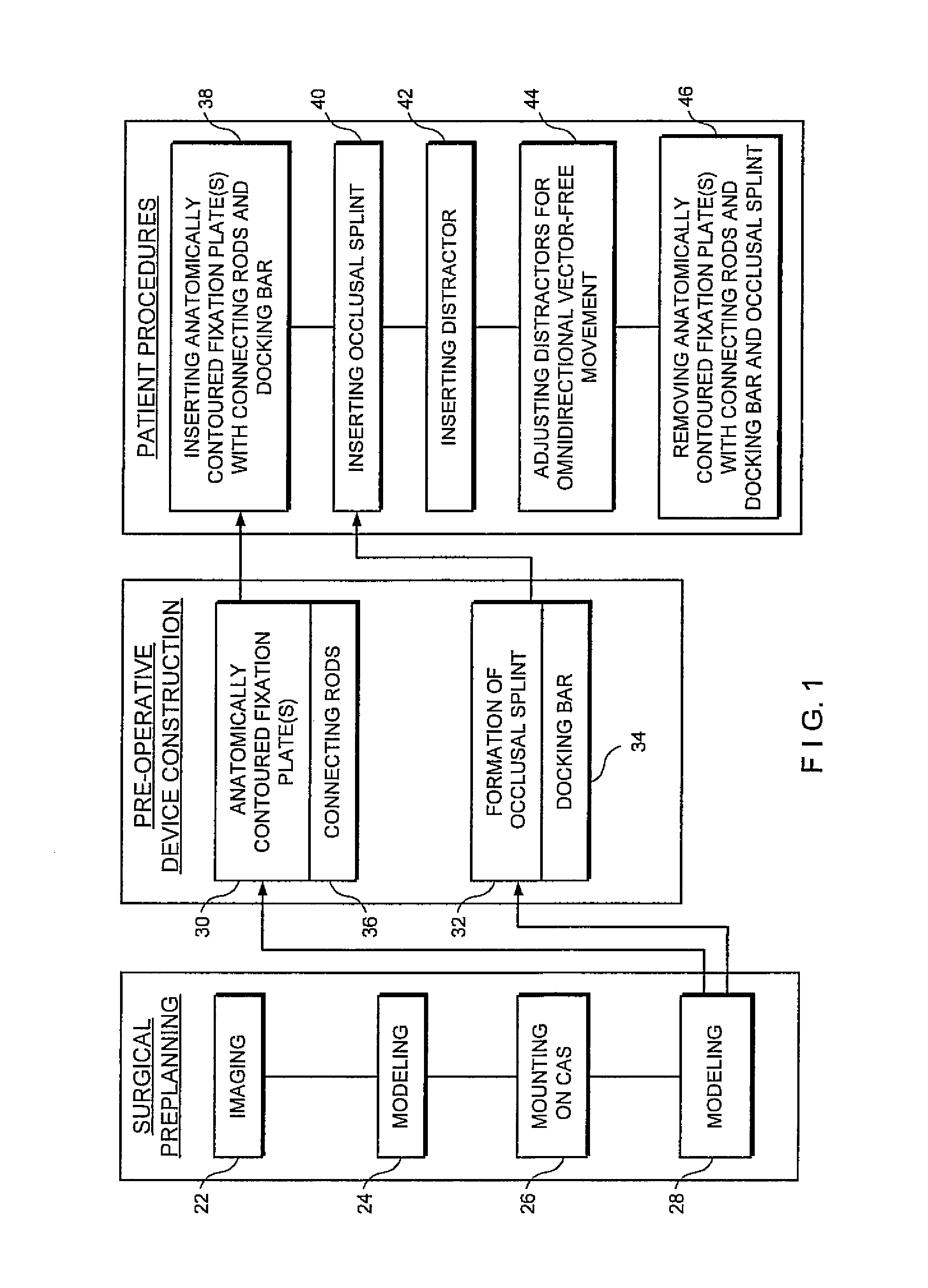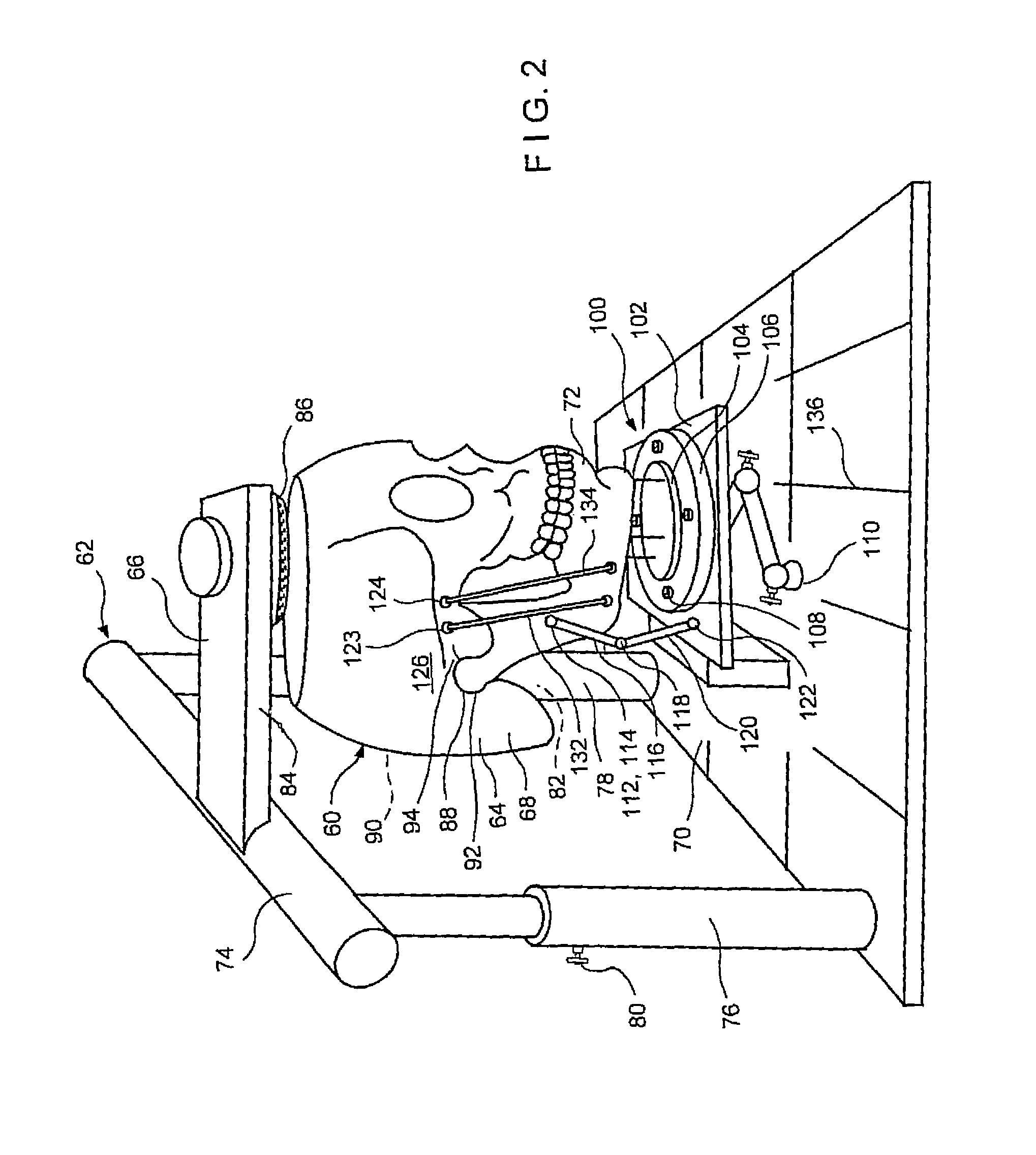Craniofacial anatomic simulator with cephalometer
a technology cephalometer, which is applied in the field of craniofacial anatomic simulator with cephalometer, can solve the problems of difficult, if not impossible, to make accurate surgical plans based solely on a limited number of two-dimensional renderings of bone geometry, and the difficulty of accurately mounting the fixator on the patient according to the presurgical plan, so as to facilitate the formation of pre-operative intra-oral devices
- Summary
- Abstract
- Description
- Claims
- Application Information
AI Technical Summary
Benefits of technology
Problems solved by technology
Method used
Image
Examples
Embodiment Construction
[0030]This disclosure describes a new system of orthopaedic surgery, which changes present-day craniofacial procedures and is applicable to all forms of orthognathic surgery and dental and prosthetic procedures. As the simulator has particular application to distraction osteogenesis, in the description which follows distraction osteogenesis is used as an exemplary case. However, it should be borne in mind that by working with the craniofacial anatomic simulator of this invention, the ability of the surgeon to visualize the endpoint of the surgery—whether or not the procedure includes distraction osteogenesis—and to plan and detail the pathway to reach the endpoint is greatly enhanced hereby.
Surgical Preplanning
[0031]Referring to the schematic diagram of the system FIG. 1, a general overview of the new system of orthopedic surgery is now provided. Three principal divisions are apparent, namely, (1) surgical preplanning; (2) pre-operative device construction; and, (3) patient procedur...
PUM
 Login to View More
Login to View More Abstract
Description
Claims
Application Information
 Login to View More
Login to View More - R&D
- Intellectual Property
- Life Sciences
- Materials
- Tech Scout
- Unparalleled Data Quality
- Higher Quality Content
- 60% Fewer Hallucinations
Browse by: Latest US Patents, China's latest patents, Technical Efficacy Thesaurus, Application Domain, Technology Topic, Popular Technical Reports.
© 2025 PatSnap. All rights reserved.Legal|Privacy policy|Modern Slavery Act Transparency Statement|Sitemap|About US| Contact US: help@patsnap.com



